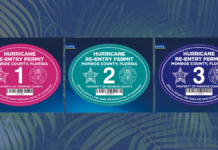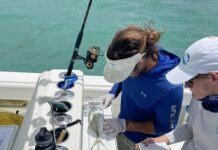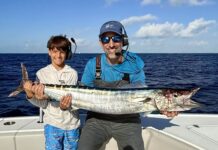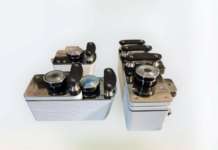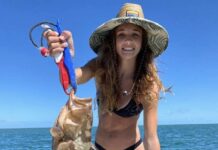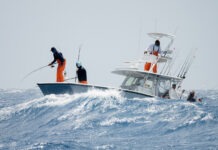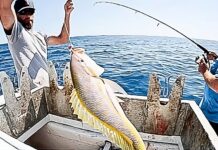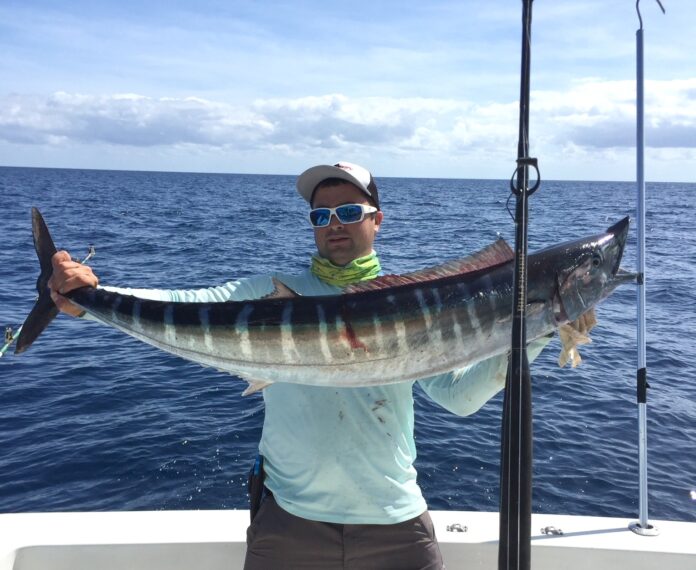
Wahoo fishing in the Florida Keys is a pursuit defined by strategy, expertise and the thrill of the chase. These sleek, speedy fish, known for their vibrant colors and razor-sharp teeth, roam the depths of the Gulf Stream, often found in areas with steep drop-offs, reefs and underwater structures. They are often found in waters with temperatures ranging between 70 and 84 degrees, making the waters of the Keys an ideal habitat.
For anglers, catching wahoo is as much about the preparation as it is about the actual fishing. It starts with understanding their behavior, preferred habitat and feeding patterns. Wahoo are voracious hunters, feeding on smaller fish like bonita, ballyhoo and squid. This knowledge guides fishermen to select the right bait and lures. They often opt for either live-baiting fish such as bonita over targeted areas such as wrecks or high-speed trolling with flashy lures that mimic the fish wahoo prey upon.
My preferred setup while live-baiting for wahoo is a Talica 20 spooled up with 30-pound monofilament on a matching rod. The lightest you will want to go for your fishing line is a 50-pound fluorocarbon leader and number 9 wire.
Another preferred method for targeting this species is trolling Nomad deep-diving plugs. I prefer to use braid mainline while trolling so you can read the rod tip and see if the plug is fouled or not swimming correctly. Remember to leave your drag moderately tight. You don’t want to use a ton of drag while targeting these fish because they will snap your line. You want the fish to take out line to tire themselves. These fish are not aiming to get you rocked up or in a ledge on the reef like a snapper or grouper, so take your time at the initial hookup and let the fish run.
Timing is crucial in wahoo fishing. Early mornings or late afternoons are prime times when these predators are more active, hunting closer to the surface. Anglers in the Keys often use trolling techniques such as planers to reach the desired depth where wahoo typically swim.
The fight to reel in a wahoo is legendary. Once hooked, these fish unleash their blistering speed, often taking line in rapid bursts, testing both the angler’s strength and the tackle’s durability. With bursts that can reach speeds of 60 mph, the wahoo is a formidable opponent. Its sudden acceleration and changes of direction make it a true challenge to bring alongside the boat.
While these fish are an epic fight, cooking wahoo, with its firm, white flesh and mild flavor, is a delight that will reward you with a delicious meal. Wahoo is best enjoyed when fresh – ensure the fish is promptly iced after being caught for optimal taste.
My favorite way to prepare wahoo is to make a citrus ceviche. I begin by dicing the wahoo into pieces about the size of a dime and marinating them in a mixture of lime and lemon juices. The citric acid from the fruit will cook the wahoo to perfection after just a few hours. Adding diced tomatoes, red onions, cilantro, a pinch of salt and some jalapeños make this a yummy, refreshing treat. This ceviche recipe is not limited to wahoo; it is also great with fresh snapper, yellow jack and cero mackerel.
Wahoo is a rewarding fish given the time and patience to capture one of these athletic creatures. So get out there and dial in your fishing skills so you can catch the fish of a lifetime in your own backyard.
To book a trip with Captain Bill and Top Notch, call 732-674-8323.

